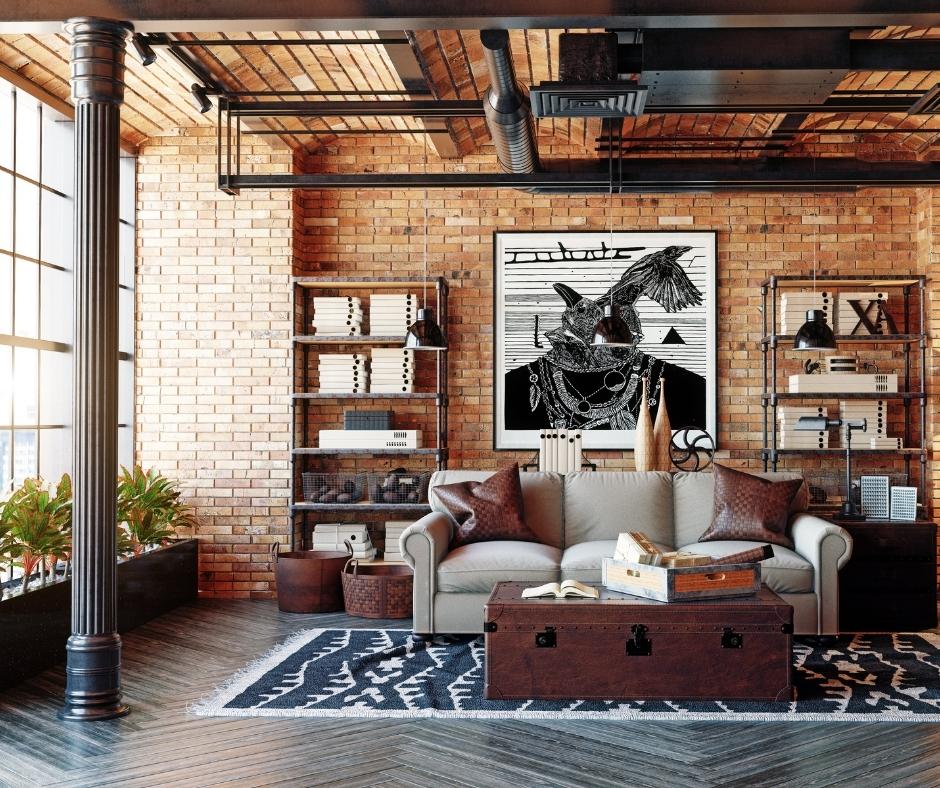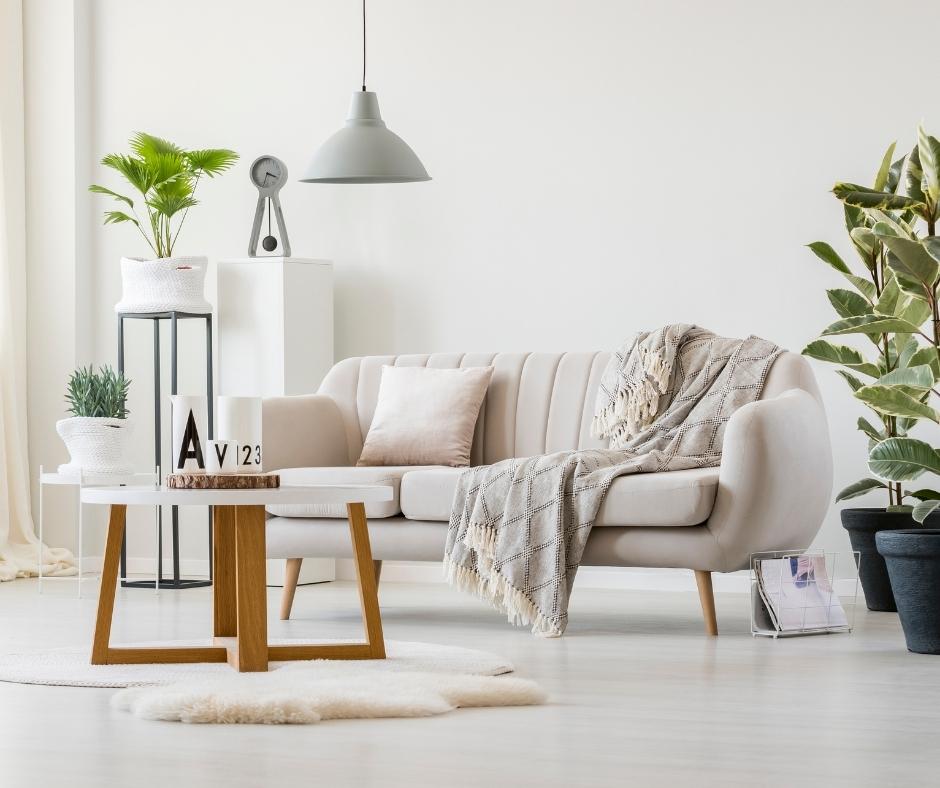We all know how important light is in our living spaces. It improves your house décor and different types of illumination enhance the room’s aesthetics. The lighting can also inspire creativity, uplift your mood, and act as a source of motivation. But, how many lights for the living room are ideal?
The number of lights you need in your living room will depend on several factors: room size, the purpose of the room, and the kind of atmosphere you want to create. For most of us, our living rooms are multipurpose. This means that they can be used to welcome guests during the day, to read, or to watch TV.
Your lighting needs to reflect these functions and, as such, must be bright. Therefore, you need at least three types of lights in your living room.
In the living room, you’ll want to kick back and relax in the evening while enjoying a movie or chat. Or, you may spend a lot of time chatting with your family. So, you will need to adjust your lighting to reflect the mood and purpose. You can use ceiling fan lights that will help keep your living room light and cool at the same time.
As such, it’s important to use different types of lighting in your living room to create the kind of mood you want at all times of the day.
In This Article We'll Discuss
How to Plan for Your Living Room Lighting

You will need different lighting to fit the different purposes of your living room while maintaining a bright, relaxing, and welcoming atmosphere. You can also consult an interior decorator who will recommend the types of lighting that will give you the look you want.
But, if you are a DIY person, here are a few recommendations for three types of lighting every living room should have:
Ambient Lighting
This is the main source of lighting in your living room. It is also known as general or background lighting, and it’s usually a chandelier or pendant light. If your living room has a high ceiling, a long pendant is better because it will amplify the height of your room.
Lighting makes your living look airy and spacious. So, supplement your main lighting with floor lamps, wall lights, and corner lights.
Task Lighting
Your living room is multipurpose. Therefore, you should have lighting meant for specific purposes. For instance, if you work from your living room, your desk should have a desk or table lamp that you can switch on when you’re working and off when you are not. An adjustable floor lamp would also be practical.
For those who love watching TV, we all know that it produces its own light. Therefore, you’ll want to ensure that the glare from your lights won’t interfere with your favorite TV show.
Be sure that they are in a position where their light won’t reflect on your TV. In this case, you can use bias lighting that is positioned behind your television. It will help you eliminate the glare and will also alleviate eye strain caused by watching TV in the darkness. Govee TV LED Backlight Strip is the best bias light.
Mood Lighting
Mood lighting is all about setting the right atmosphere and mood for your living room. Install lighting that will highlight some of your favorite items in the house. These items may include architecture, photos, and treasured art pieces. This type of lighting will ensure that your attention is not drawn to unimportant parts of the room.
Your living room is also great for relaxing in the evening. To ensure your lighting system creates that relaxing atmosphere, you’ll want to be able to adjust it to create a warm environment. Using dimmable bulbs will help you achieve that warmth.
Tips to Help You Determine How Many Lights for Your Living Room

Your Living Room Alignment
It’s important to consider the direction your living room is facing. If it’s away from direct sunlight, you will need more lighting. But, if it already gets plenty of natural light, you will need less.
If your living room doesn’t have enough natural light, you will need the main light and supplementing lights. When there is not enough natural light, the corners are usually dark, so you will need to illuminate them.
To do so, you can use portable floor lamps. Accent lighting can be ideal for brightening and decorating, especially in small spaces.
Corner Lighting
Your corners need to be highlighted, especially if you’ve placed a piece of art or plant in them, as many of us do. An oversized floor lamp is the best option for this. Look for a lamp that complements your house finishings and the items in the room. This will improve your living room’s overall design.
If your work desk is near a corner, the floor lamp can be multipurpose. You can also use it to provide lighting to your workspace.
Play Around with Ambiance
You don’t want to be changing bulbs every time you need dimmer lighting. Instead, you can use an adjustable lighting system.
During the day, you can keep it as bright as possible. Then, come evening, you can adjust it to suit the mood you are going for.
Most Common Questions
How many lights should a small living room have?
Your choice of lighting can make or break your overall design. So, be careful when choosing your small living room lighting. You’ll want to use a mixture of ambient, task, and accent lighting to help enhance the room’s aesthetics.
In small living rooms, most corners do not get natural sunlight. And, at night, your living may feel crowded due to shadows. Eliminate the problem by placing floor lamps in specific corners of your living room. It would be best to select a standing lamp that also acts as a decoration. Simple Design Home floor lamps fit this description.
If your living room has a low ceiling, you will be overdoing it if you install a pendant or chandelier light. Instead, let the downlights serve as the primary light source. It wouldn’t be practical to have several circuits in your living room.
If you have a high ceiling, then a multi-directional chandelier would be ideal. It gives your room enough light to brighten the dark corners, lessening the number of supplemental lights needed.
How many lights should a large living room have?
Large living rooms are great because you can include different types of lighting to bring out the room’s overall design.
Every living room, large or small, must have a combination of ambient, task, and mood lighting.
How many sources of light should a living room have?
Every living room should have three lighting sources. But, before deciding where to put them, you should look at your living room to see which areas need task and accent lighting.
Then, you will be able to plan your lighting scheme properly. It would be best to consult an expert to bring out the best in your living room.
How many lumens per sq ft do you need to light a living room?

Lumen refers to the total quantity of light produced by your lamp or bulb per unit of time. A 100-watt bulb produces approximately 1,500 to 1,700 lumens.
To determine how many lumens you need in your living room, multiply your living room’s square footage by the number of Foot-Candles required. For instance, a 100 square foot room lit by 10-20 Foot Candles will need an average of 1,000 – 2,000 lumens.
Final Thoughts

When determining how many lights for your living room are necessary, first decide on the overall look you are going for. Then, select the lights and incorporate them into your space in a manner that amplifies your overall living room design. Ensure that the final look will have you wanting to spend every minute of your day in the living room.
Your lighting scheme can make or break your living room. So, be extra keen when choosing ambient, task, and accent lighting. What kind of lights are you using in your living room? Share your answers and questions in the comment section.

